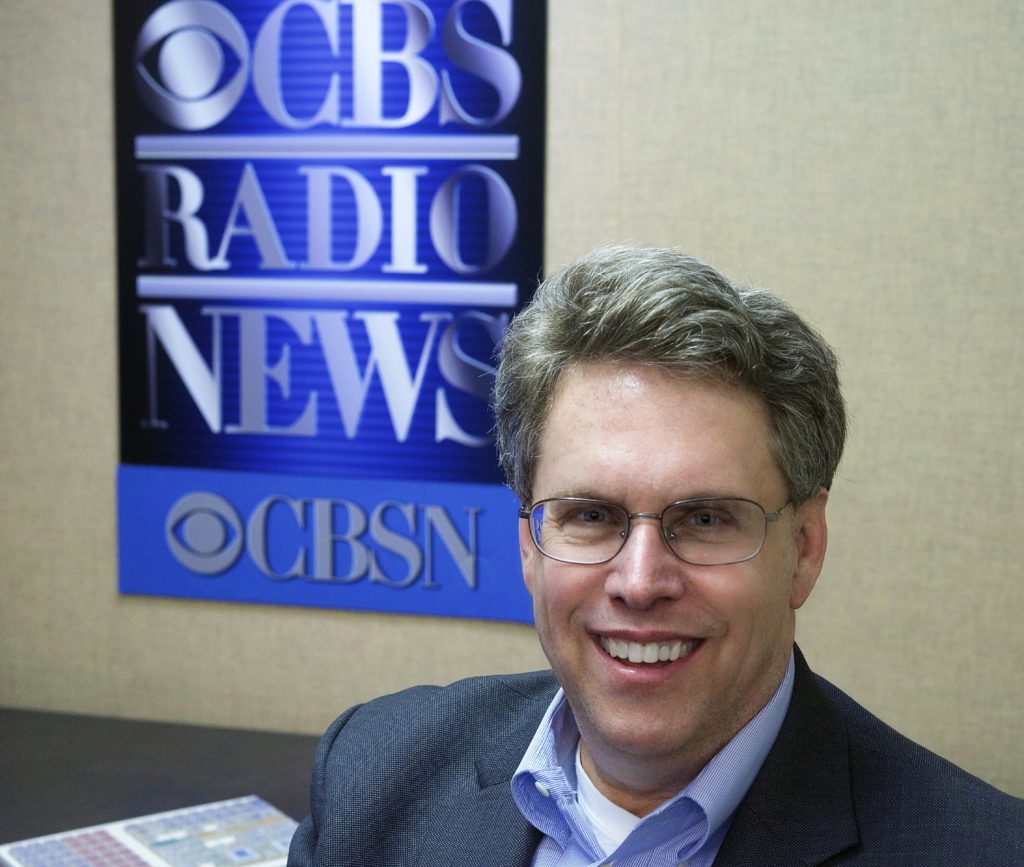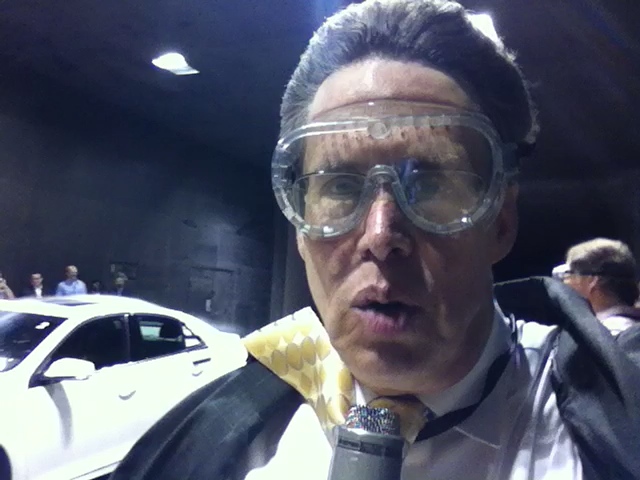 It must be a bit disconcerting to live next door to Jeff Gilbert. While most people hold onto their cars for more than a decade, Jeff has a brand new car or truck in his driveway at least every week. As the Automotive Reporter for WWJ NewsRadio 950 in Detroit, there’s no one closer to the auto community – and radio – than Jeff.
It must be a bit disconcerting to live next door to Jeff Gilbert. While most people hold onto their cars for more than a decade, Jeff has a brand new car or truck in his driveway at least every week. As the Automotive Reporter for WWJ NewsRadio 950 in Detroit, there’s no one closer to the auto community – and radio – than Jeff.
There’s a good chance people in the radio business are envious becuase Jeff gets to drive all those hot new cars – about 70 a year. And many in the auto industry are jealous and wish they were on the radio. Yes, it’s the perfect job…especially when you live in the Motor City.
He’s been on WWJ’s airwaves since 1990, hosting two daily features – “The Car Chronicles” and “Supplier Spotlight” – and is often the radio voice you hear on CBS News whenever anything happens in the auto biz – which is quite often these days. Jeff has been a featured speaker at our DASH Conferences, and truly understands the relationship between the radio and automotive communities.
At a time when the radio industry is struggling to understand what the car companies are thinking, and what it means to broadcasters, Jeff writes today’s “Guest List” post from his unique perspective as both a car guy and a radio guy. – FJ
 A confession—even after 20 years of doing auto reviews, my favorite part of the car is the radio—or today, the infotainment system.
A confession—even after 20 years of doing auto reviews, my favorite part of the car is the radio—or today, the infotainment system.
But generally when I talk to people in the industry, they still call it the radio…much like a tissue is Kleenex and a copy machine is Xerox.
That means, even as change comes rapidly to vehicles, our industry has an incredible head start.
Add in 43 years in the radio business, and I have a unique view on the relationship between the auto industry and the radio industry.
Here are a few things I have learned:
1. Car companies have no desire to remove terrestrial radio from vehicles.
For carmakers, it’s all about giving customers what they want. There is no advantage to car companies to take away traditional radio—as they have CD players, cassette players and 8 tracks.
Taking a CD player out of a vehicle reduces weight and improves fuel economy. There’s no similar gain from taking out terrestrial radio. Car companies are about adding choices. So, while it means we will deal with a continually smaller pie, radio remains very integrated into every system—and the talk I hear about radio being removed from cars comes from radio people – not car people.
AM radio could be a different story, as more electrification means more interference and some brands–BMW and Tesla notably–have decided the cost of shielding isn’t worth it.
2. Time is on our side.

Something new that appears in vehicles this year will not be in nearly all vehicles for 20 years. It will be nearly a decade before it’s widespread.
The average vehicle on the road today is now about 12 years old. These time spans are only going to grow longer as vehicles become more reliable…and more expensive.
The clock is not yet ticking, as the “killer app” for bringing Internet radio into the vehicle simply has not yet been invented. AppleCarplay is a great improvement, but it’s still not as easy to use as listening to a radio station. Navigation systems can warn you of traffic problems ahead. But they aren’t yet up to the standard of radio traffic reports.
And that “killer app” has to stand the test of time. That 12 year-old car is a 2005 model, sold at a time when Blackberrys were the ultimate smartphone, and people were just beginning to discover MySpace.
3. Simplicity is our friend

What looks good, doesn’t always perform good, and hard-to-use infotainment systems remain the prime area of consumer complaints—even if they are great looking.
Carmakers are discovering that futuristic sliders, and on screen displays are poor substitutes for real controls. Volume knobs and buttons are making a comeback.
Then there’s the whole issue of distracted driving. And as somebody who routinely drives about 70 different vehicles a year, some of these systems are extraordinarily distracting.
Radio is easy…and for many people, easy is better than personalization, if that personalization means a lot of work.
But, you also have to put out a product they want to listen to.
4. Much of what you know about Millennials is wrong

Remember when they only wanted to live in cities, preferred their iPhones to cars, and, if they had to go somewhere, took public transportation or Uber.
They grew up, bought houses in suburbia, and are now the second biggest car buying group behind Baby Boomers—and they are heading to number one, with a bullet–or more likely an SUV.
There’s been a lot of talk about younger people being willing to be more into ride sharing, and other “new mobility” ventures. That seems to be true in urban areas where a vehicle can be a liability. But as they move into the suburbs, priorities change.
Remember, people don’t buy vehicles for their everyday capability, they buy them for their maximum capability. SUV’s are popular because they can carry a lot of people WHEN WE NEED TO, get through bad weather WHEN WE NEED TO, and haul stuff WHEN WE NEED TO.
Even though we generally only have those needs a few times a year, we want that capability. That will keep people buying vehicles – equipped with radios.
Compelling programming will keep them listening to the radio while they are driving those SUVs.
5. It will be a while before drivers can take their eyes off the road.

Someday, everybody in a vehicle will be able to watch videos, or do something else while the vehicle is doing all the driving.
But there’s still a lot of hype—and while we are seeing crash prevention systems now, and will soon see some limited automated shuttles and “robotaxis”—the operative word is limited. Nobody yet has a firm idea when you and I will be able to buy an affordable self-driving car that can take us anywhere we want to go.
So audio will remain the key medium in vehicles for a while, and—factoring in the possibility of car sickness—perhaps even after self-driving vehicles debut.
You can follow Jeff on Twitter @jefferygilbert.
Connected Car Webinar
Want to know more about how the connected car will affect radio broadcasters? Watch our webinar recording, Understanding the Connect Car: An Introduction for Radio Broadcasters.
More Guest Lists
- Dick Kernen: 5 New Skills That Broadcasting Schools Are Now Teaching
- 5 Ways Radio Broadcasting is Different From Podcasting (From a Podcaster Turned DJ)
- Sean Pollock: 5 Things About Millennials Every Radio Broadcaster (and Sales Team) Should Know
- Luke Bouma: 6 Things Every Radio Broadcaster Should Know About Cord Cutting
- BTWs With Richard Sands
- What To Do If Your Radio Station Goes Through A Midlife Crisis - April 25, 2025
- A 2020 Lesson?It Could All Be Gone In A Flash - April 24, 2025
- How AI Can Give Radio Personalities More…PERSONALITY - April 23, 2025





Leave a Reply